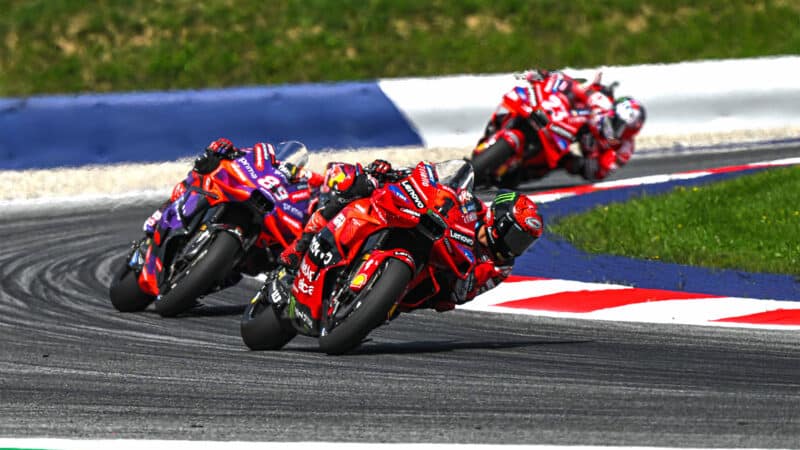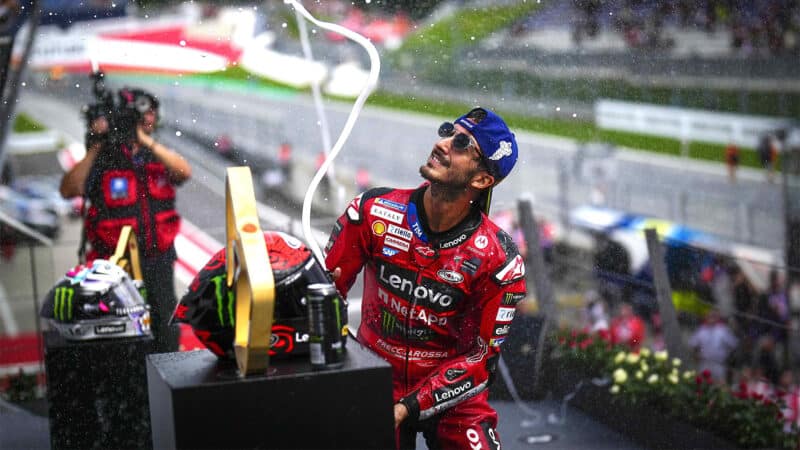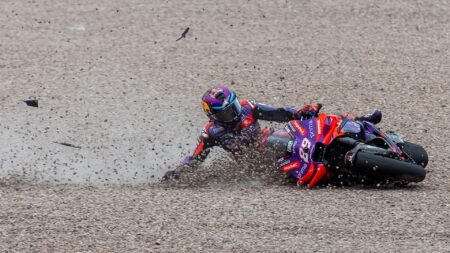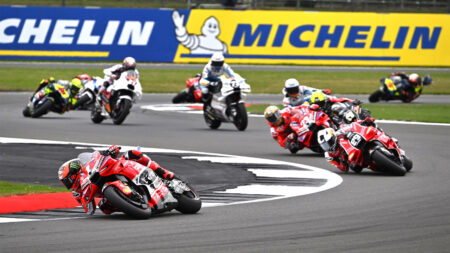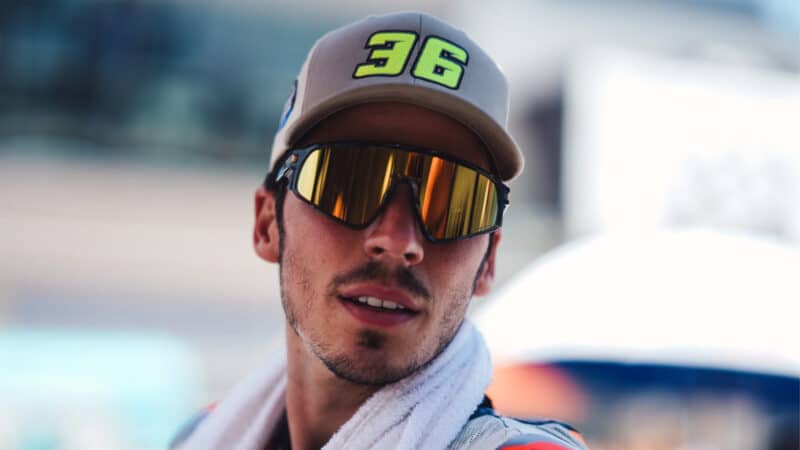Wheelspin on the gas (in every gear!) and front-tyre lock (at 190mph!) are the challenges the riders have to deal with.
Surely that’s what traction control is for – to reduce wheelspin? Yes, but whenever the TC kicks in, the throttle butterflies close, reducing the amount of torque delivered to the rear wheel and killing acceleration. Not good for lap times.
So Bagnaia spent the weekend with his Ducati crew reducing, not increasing, traction control, because the human hand can still be better than a little black box.
“The rear was spinning a lot, so I tried to wait with the throttle until I found good traction – the exit of Turns 3 and 10 [onto the back straight and start/finish] were especially difficult to manage,” said Bagnaia after his 25th MotoGP victory. “We worked a lot with the electronics and made a step by removing a lot of traction control to have it more in my hand, so it was easier to manage.”
Bagnaia also used his brain to further control the spin by forcing his Ducati GP24 to maintain some lean angle on the straights, which puts a bigger section of the rear tyre on the road to increase grip.
And he also used his meticulous precision on the brakes, to avoid the front-end crash that took him out of the Silverstone sprint.
“Here it’s a bit easier to manage because you can use more rear brake to have a little rear slide before entering corners,” he added.
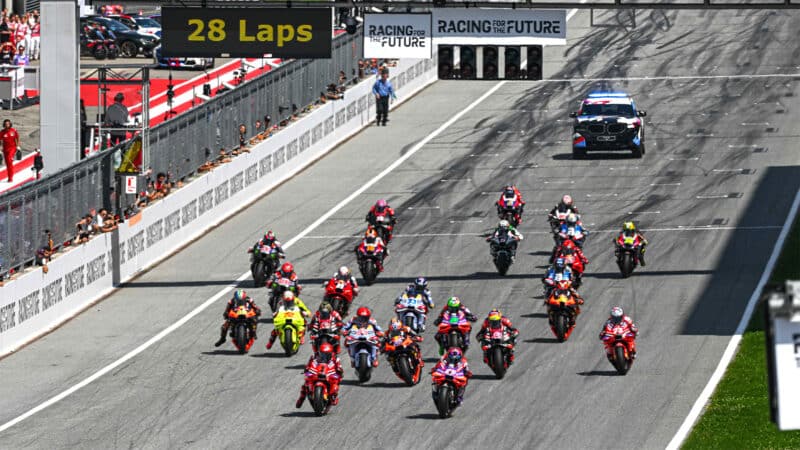
Marc Marquez had no front holeshot device, so his GP23 is lifting its front wheel and his hopes of a great race are already over
Dorna
The rear-pushing-the-front issue was more of a worry in Saturday’s sprint, which he also dominated, because he used a soft rear slick, which had more grip, exacerbating the push problem and giving his front tyre an extra-tough time
“The problem I had with front tyre [in the sprint] was arriving from the rear because in corners 3, 4 and 10 I always felt the rear pushing the front. This season the rear tyre is impressive, incredible! We are going super-fast everywhere – the fastest lap in the sprint was two tenths slower than the 2023 pole position, so it’s unbelievable.”
Title rival Jorge Martin arrived in Austria three points ahead of Bagnaia and left five points behind, with nine grands prix remaining. He too rode under the lap record but although he stayed close for a while on Sunday, he simply couldn’t maintain Bagnaia’s missile-fast pace.
“Pecco seems a bit better at the moment – as soon as I was in second I lost the possibility for victory,” said Martin who after leading the first lap couldn’t resist his fellow GP24 rider – both were desperate to lead, so their front tyres wouldn’t overheat in the draft.
“We have a lot of front lock here but we are kind of used to it,” Martin explained. “Behind Pecco it was even worse, because everything gets so hot. It’s kind of strange and a worry to brake and feel like crashing all the time, but we control it.”
Such is the optimism of pro racers! On Friday morning rookie Pedro Acosta crashed at 185mph when he braked at the end of the back straight and locked his front tyre, because he had let it cool down too much.
When someone asked him if he thought that his crash was dangerous he replied, “Everything in life is dangerous – maybe the next time you cross the street you will get run over by a bus”. This is how racers rationalise the dangers of their occupation.
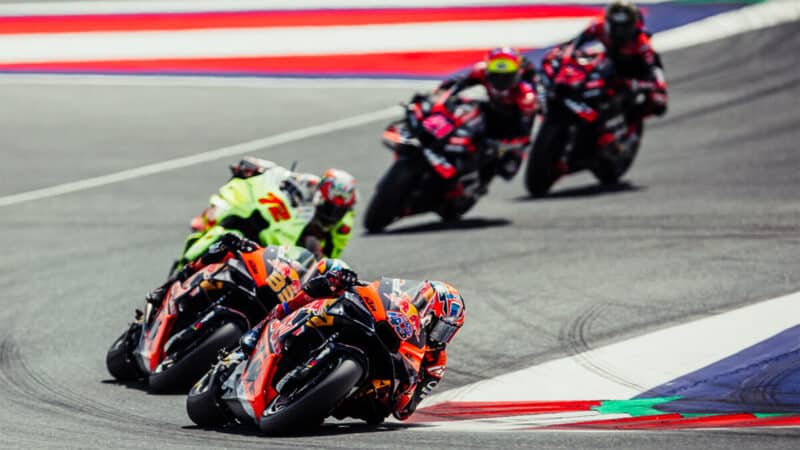
KTM had its best race for a while – helped by Michelin’s special Red Bull Ring rear slick – Miller leads Binder, Bezzecchi and the factory Aprilias
KTM
Double Silverstone winner Enea Bastianini scared himself with a few front locks in Sunday’s race and decided that a lonely third place was good enough. “It was too difficult to have everything under control,” he said.
Jack Miller was going for his best result since Portugal – battling for fifth place with Marco Bezzecchi and Red Bull KTM team-mate Brad Binder – until he slid off. Chasing two riders at close quarters sent his front tyre temperature sky high.

